Each grower dreams of a flower garden, decorative all season. The best way out is perennials blooming all summer. Their care is minimal, and seedlings will have to be grown only in the year of planting.
Material Content:
Plants for sunny places
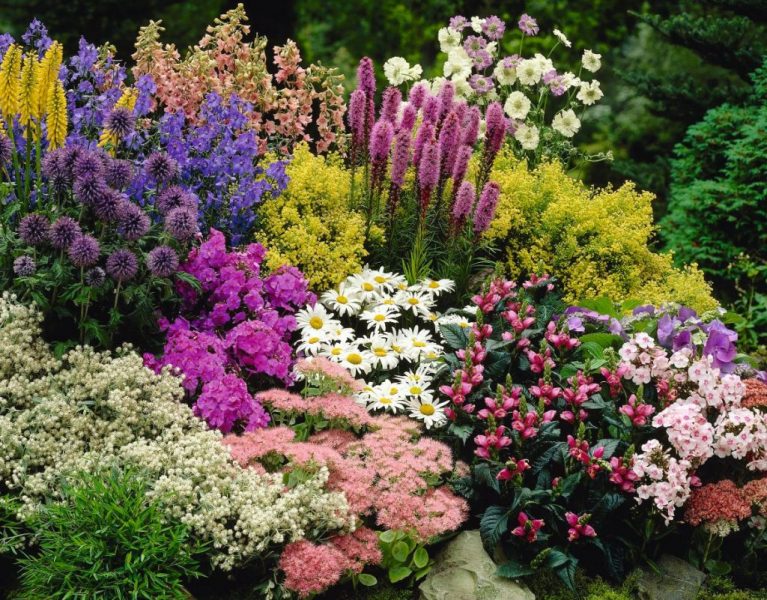
The range of perennials for giving is huge. Most of them grow normally in slight shading. But there are plants that like the sunshine all day. Many of them are drought resistant, which makes it easier to care for the flower garden.

One of the first to start the summer season is peonies. There are a lot of varieties, and the color palette is diverse. The plant is not too demanding to care for. Grassy species are quite hardy and winter well in most regions of our country. Treelike peonies are especially decorative, but they are more capricious in care than their grassy counterparts.
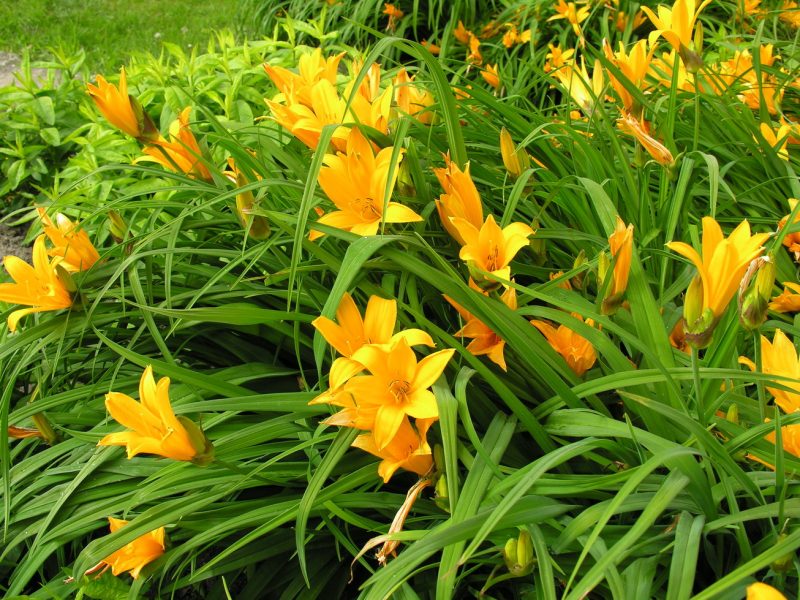
Red flies or daylilies adorn the flower garden for several months. Simple and terry, of various colors and shades, they are an excellent decoration of the flower garden. There are not so many requirements for a flower; even a beginner grower can grow it.

Gypsophila. It has both annual and perennial species. It can be a soloist, planted alone, or an excellent background for plants blooming with bright and large flowers. Perennial species bloom for a long time, differ in various heights, white or pink in color. In care, the plant is completely unpretentious.
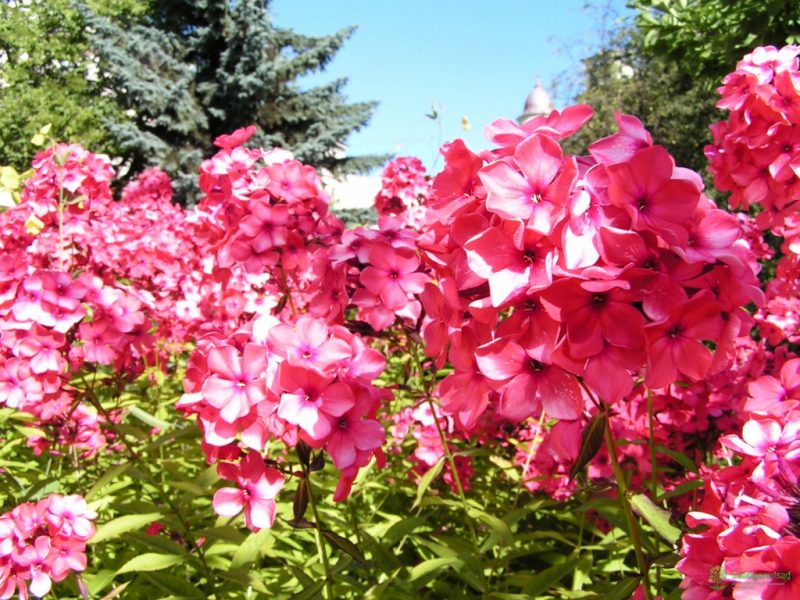
Phlox paniculata. It begins flowering in July, some varieties earlier, if you cut off faded inflorescences, it can decorate the flower garden almost to frost. The color of the flowers is varied, as well as the height of the plants. This perennial is easy to propagate by cuttings.

Irises.These majestic flowers differ in color, size and shape of the flower, height, depending on species and varieties. But all of them are united by amazing unpretentiousness and vitality. Only some southern sissies are afraid of frost. All the rest winter well in the open ground.
A flower garden in a sunny place can not do without carnations, bells - Carpathian and Pozharsky, yarrow, Echinacea, daisies, perennial asters, chrysanthemums.
It is interesting:perennials
Shade-loving plants
Few plants carry the shadow. Most of them can not boast of bright and abundant flowering. Their decoration is decorative foliage.
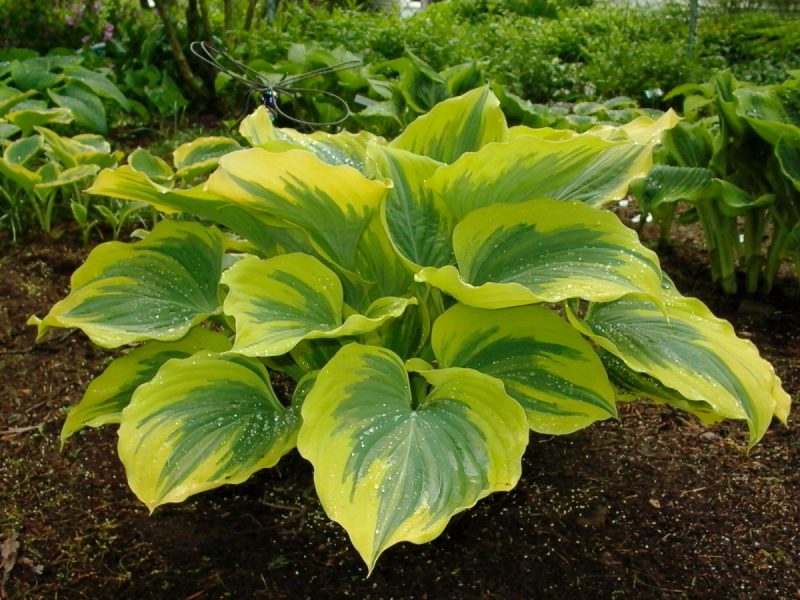
- these are the hosts who, in the shade, reach the peak of their decorativeness;
- thyroid peltiphyllum with small nondescript flowers and large decorative leaves of a rounded shape;
- kirkazon with original watermelon fruits;
- the most enduring is European ungulate, able to survive even in complete shade and remain decorative.
Among the plants with beautiful flowers, one can note many spring-blooming bulbous, which are not shade-tolerant, but bloom when the leaves that have just blossomed on the trees do not yet give shade. Asthilbe feel good in the shade with flowers collected in panicles of white, pink and different shades of red, a dicenter with original heart-shaped flowers and openwork foliage, aquilegia with simple and double flowers decorated with spurs. Good in the shade and lilies of the valley, as well as primrose, periwinkle with blue, white and pink flowers.
Ground cover perennials
There are many, most of them are inhabitants of alpine hills and rockeries.
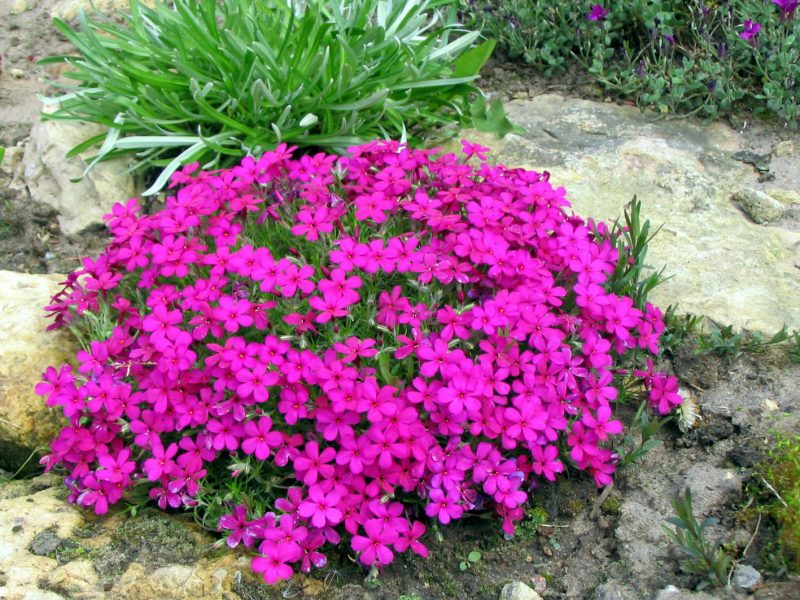
Already at the end of spring, the awl-shaped phlox blooms - a charming groundcover with creeping shoots. Fragrant flowers form a real cloud, covering bushes in plenty. The plant is unpretentious and grows quickly, forming large curtains.
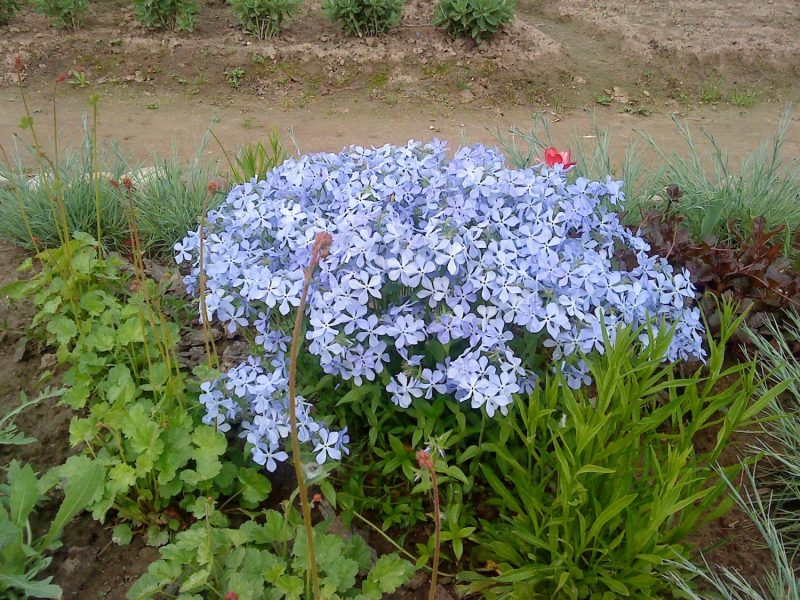
A little later, the spread phlox blooms. His flowers are larger, but the bushes are not so dense.

Clove grass is blooming most of the summer with medium-sized flowers of pink, white, red color. The flowering is plentiful, and the plant itself is unpretentious. It is easy to propagate by dividing the bush.
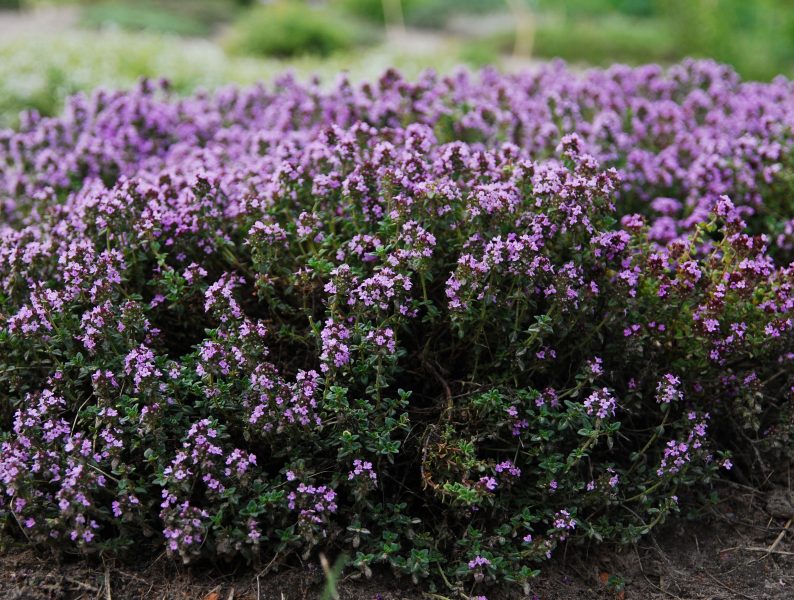
Thyme refers to gingerbread and medicinal plants. It blooms profusely with small lilac fragrant flowers, grows well.
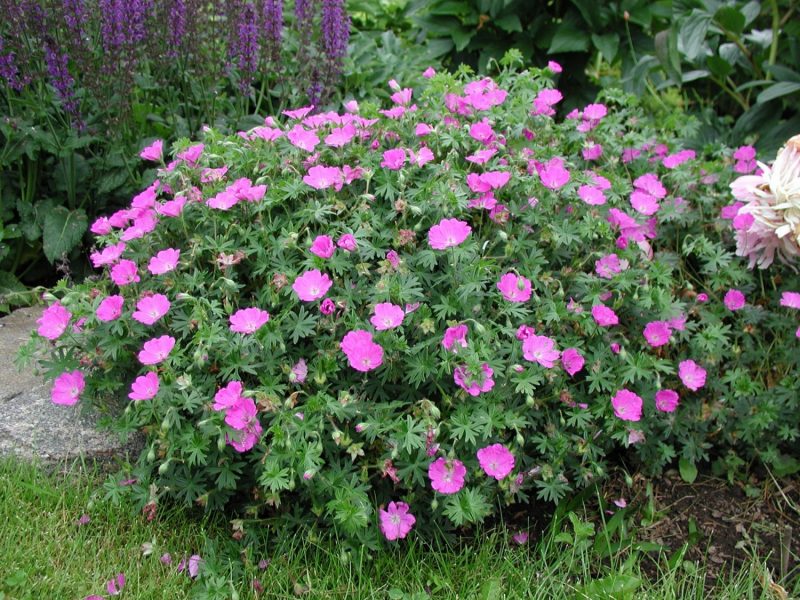
Garden geranium does not grow above 25 cm, blooms all June with pink flowers, grows rapidly, forming dense curtains. The plant is very fragrant.
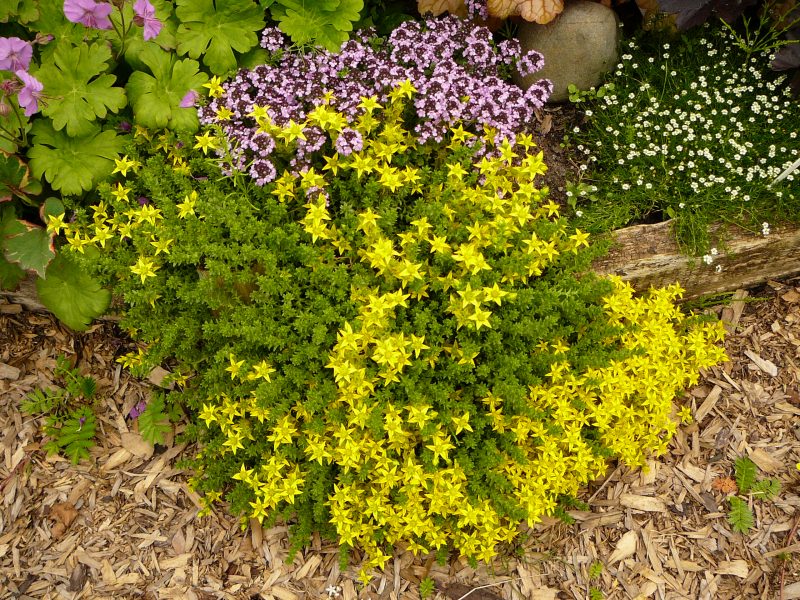
Stonecrops. There are very low species that, growing, cover the soil with a rug only a few centimeters high. This is one of the most unpretentious plants.
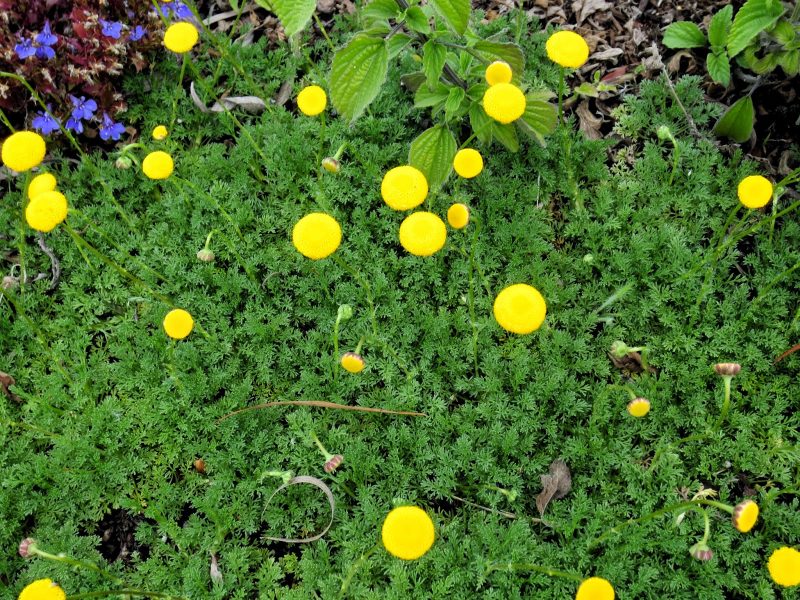
Cotula is a plant with carved leaves and fragrant small yellow flowers that appear all summer. Loves moist soils and grows well.
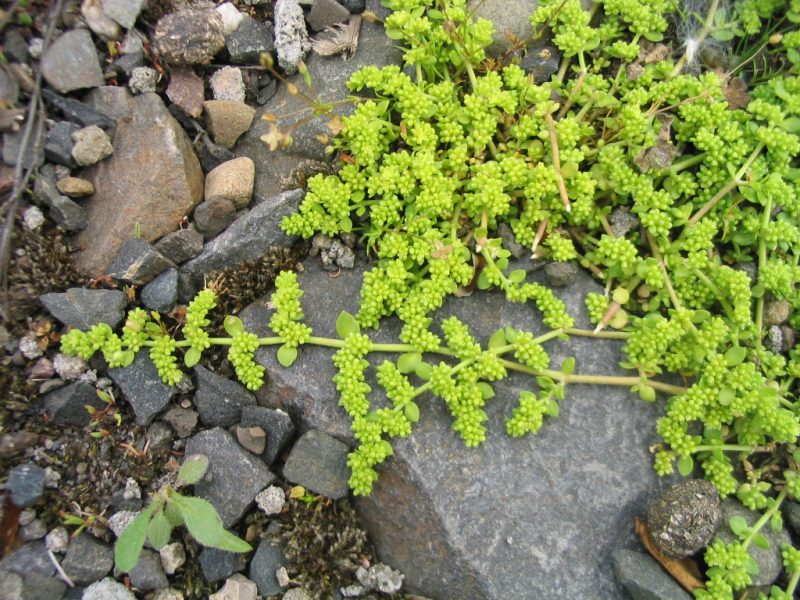
Hernies cannot boast of beautiful flowering of flower leaves located in the axils, but they quickly form pillows from small leaves, filling even the most infertile sections of the soil with themselves.
Bulb flowers
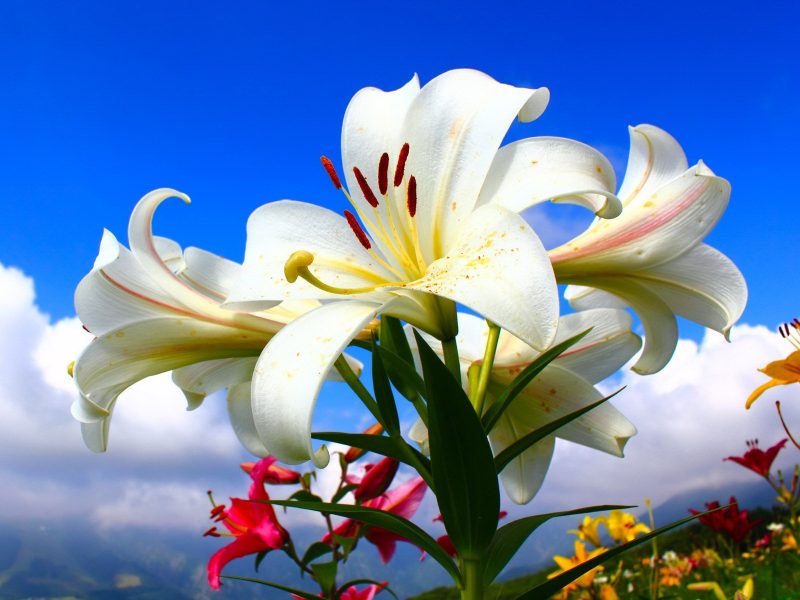
Among the bulbs, lilies are the leader. A huge number of varieties vary in height - from the border to two-meter giants, the timing of flowering and color of flowers. They are as diverse as they are magnificent.

If the rose is the queen of flowers, then the king, no doubt, is gladiolus. There are a great many varieties of it. The color is simply amazing. The only pity is that the flower arrow does not live too long.
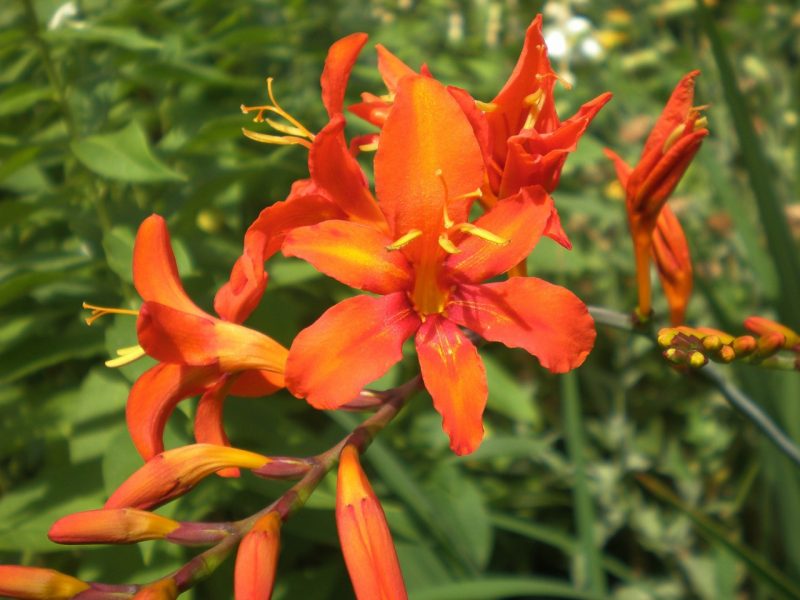
Japanese gladiolus or Montrection, which is often called crocosmia, is much less known. The plant belongs to the iris family. Her flowers are smaller, and the color is only orange, red or yellow, but it blooms much more abundantly. For winter, corms of Japanese gladiolus are dug up.

No less beautiful and a large family of decorative bows with fluffy spherical inflorescences. True, they do not bloom for long.

Galtonia is often called Cape hyacinth, it only blooms in the second half of summer, capturing September.Numerous bell-shaped white flowers are collected in brushes carried by a meter flower stalk. The plant does not tolerate frosty winters; bulbs will have to be dug up.

Tuberose. This flower captivates with the scent of terry white, pink and purple flowers, collected in a brush. The smell is especially strong at night. For the winter, corms need to be dug up.
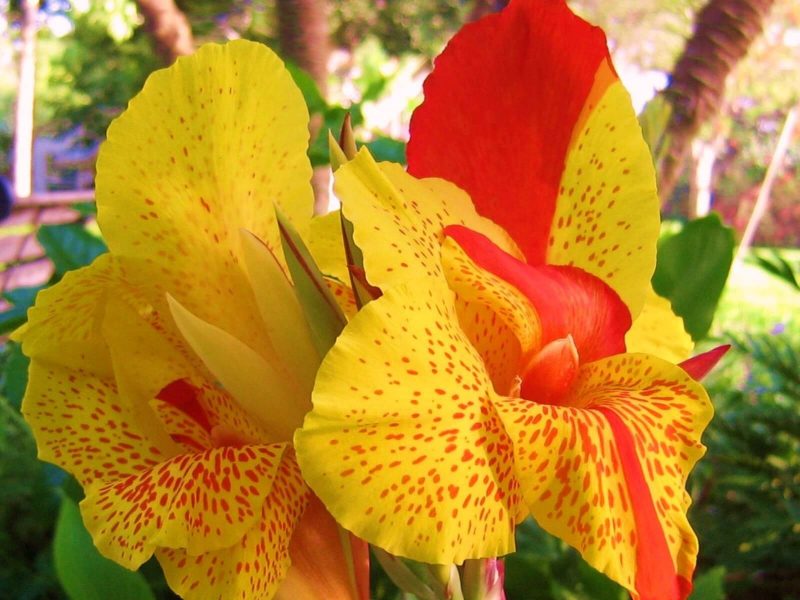
Cannes. Their rhizomes look like bulbs and, like many bulbs for the winter, they need to be dug up. But these chores are paid off by the decorativeness of the flower. Large flowers have a diverse color, sometimes covered with contrasting specks. The plant itself can be both low, only about half a meter, and a half meter giant.
Perennials blooming all summer
This group of perennial flowers is more numerous than many people think. They differ not only in requirements for growing conditions, but also in height.
Undersized
Many of them are ground cover plants and have taken root in rockeries and alpine hills. Some are used as a border in flower beds and flower beds.

Arabis reaches a height of only 15 cm. A form with white flowers collected in a brush pleases flowering in June and July, and with burgundy and pink - all summer.
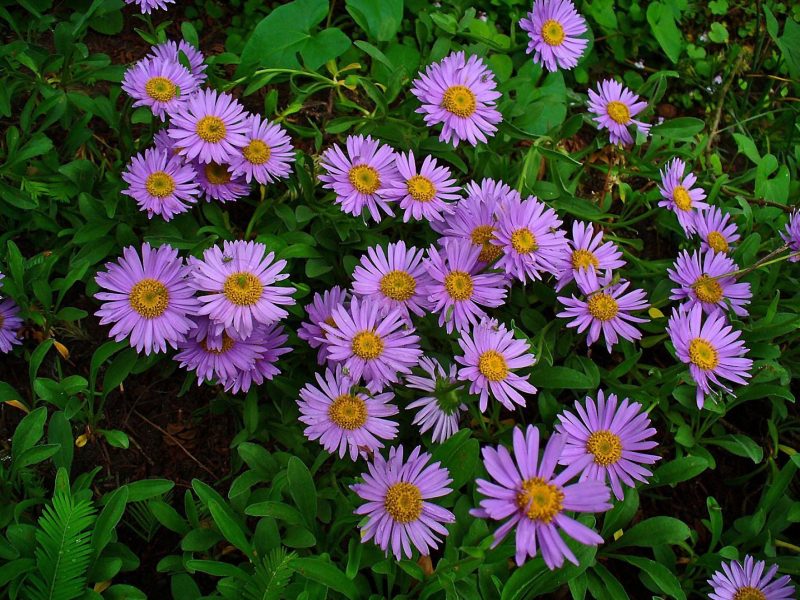
Astra alpine varieties White Alps can bloom from June to September. Pillow-shaped bushes only 30 cm high are completely covered with white flowers similar to daisies.
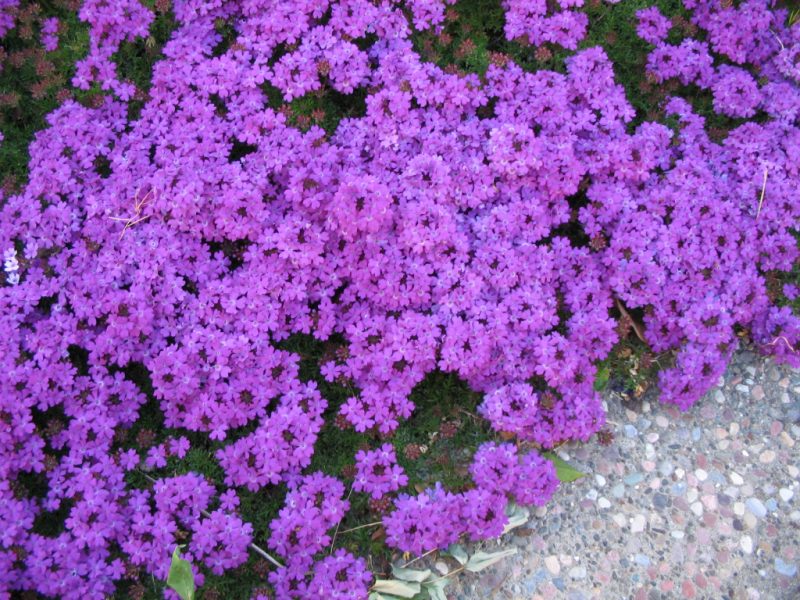
At the end of June, perennial verbena blooms with red and purple flowers in lush parasol inflorescences. Fragrant flowers appear on low bushes up to frost. For winter, you need to cover the verbena.
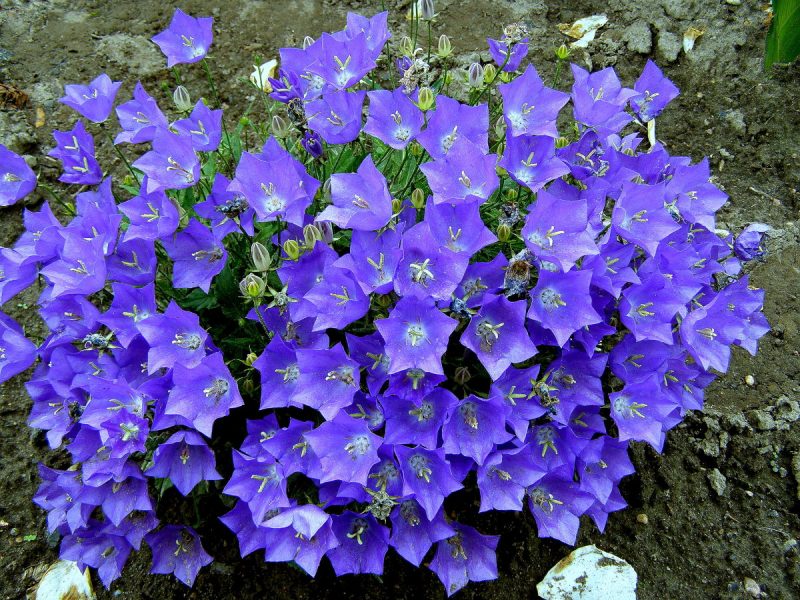
From June to August, stunted bells bloom, crowded by Gnome and Flipper Purple. Compact bushes are covered with a large number of flowers of blue or purple color, each capitate inflorescence carries them up to 20 pieces. Plants are drought tolerant and unpretentious.

Mylnyanka blooms with pink flowers all summer, forming pillow-shaped bushes only 20 cm high.

Single lion's pharynx-like pink flowers pleases from June to September cymbalaria. The height of creeping shoots is only 10 cm.
Medium
This is the largest group of plants.
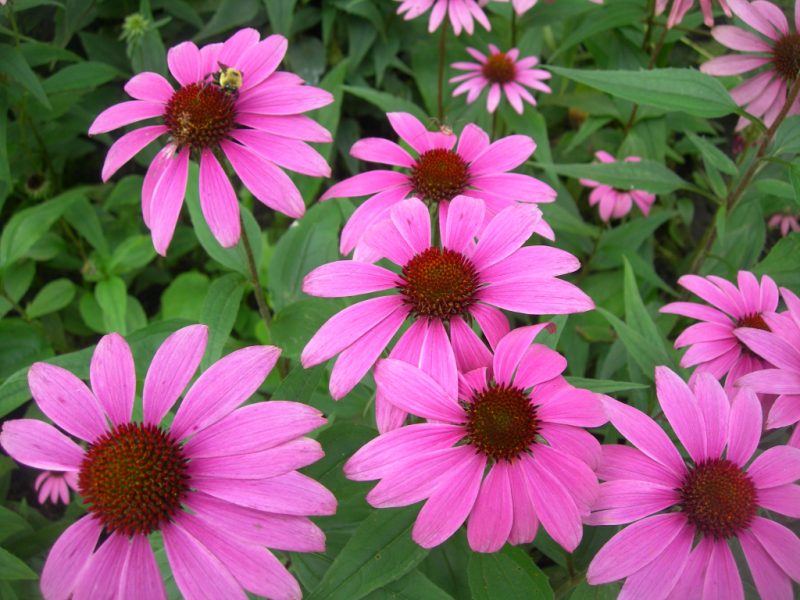
Echinacea pleases with large daisy flowers from July to September. Terry forms with varied colors have also been developed. Flower height - 75 cm.

From June to August, the pyrethrum of the Scarlet Star variety blooms with scarlet daisies. They are large - up to 12 cm, good not only in the flower garden, but also in the cut.
Read also: chamomile: medicinal properties and contraindications
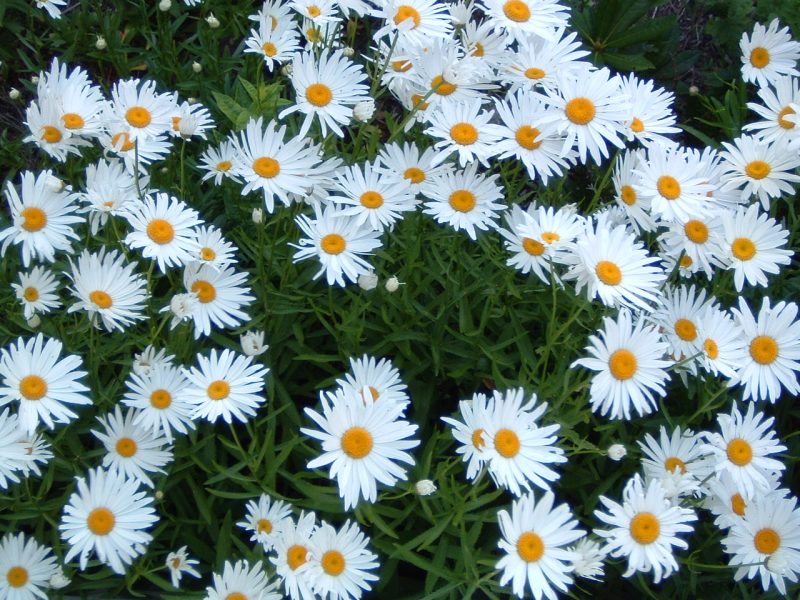
From July to September, another chamomile blooms - nivyanik. Plant height 50 cm, flowering abundant.

Monarda is not only a decorative flower blooming all summer with bright purple-pink flowers, but also a spicy and medicinal plant. It is she who gives the aroma of bergamot, which is present in the best varieties of English tea. Monarda height - 55 cm.
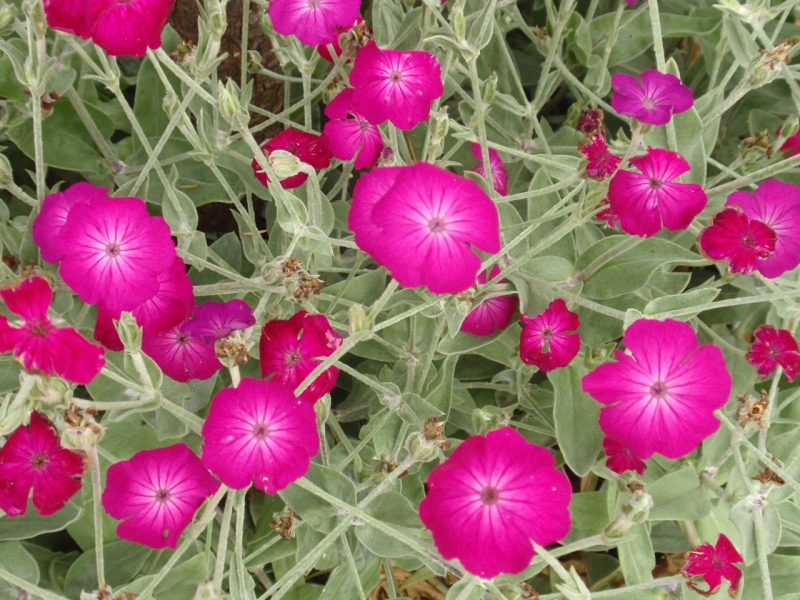
The lichenis flower is very decorated, the flowers of which are not only red, but also white and pink. Perennial unpretentious, blooms all summer, height - about 1 m.

Large-flowered flax with blue flowers up to 3 cm in diameter, which appear all summer, will look good next to lychnis. Height - 50 cm.

Beautiful raspberry flowers will delight the centrantus Raspberry jingle all summer. Strongly branched bushes smell like mint. The plant is unpretentious and feels good in the sun.
Tall
These are background plants in a flower bed. Often they are planted in solitary planting as tapeworms.

Delphinium. High peduncles with simple and double flowers of various colors dominate the flower garden. With timely pruning, plants can bloom repeatedly.
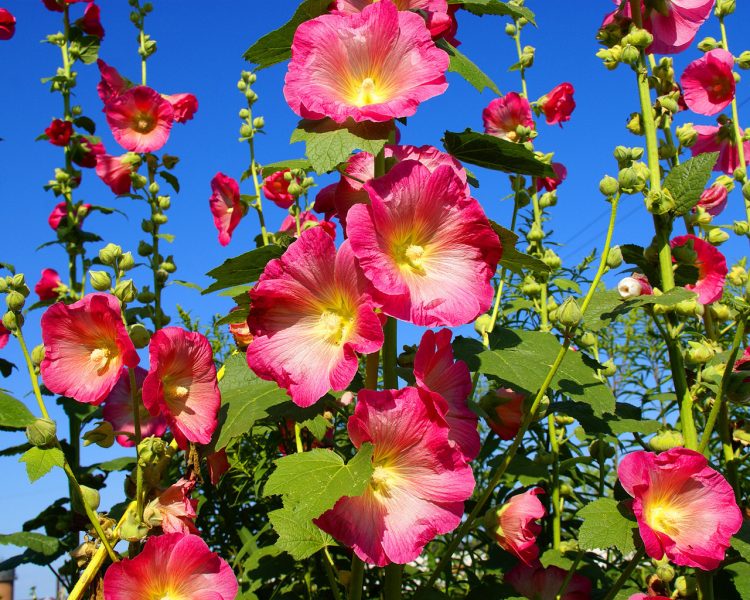
Mallow. Most often they are planted as a biennial, but with good care, plants can extend their life to several years. The height of many varieties is up to 2 m. The flowers are simple and terry of various colors.
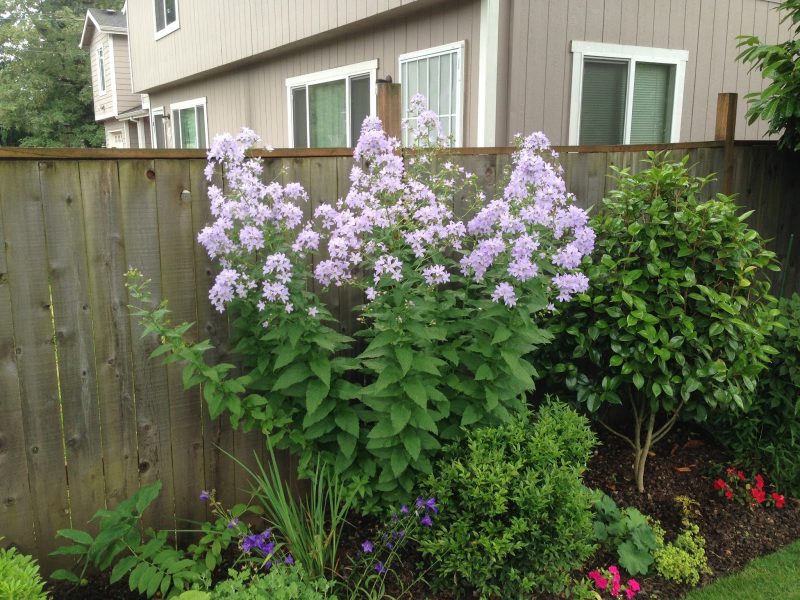
The bells are pyramidal and milky-flowered - majestic plants.Peduncles are more than half their height and are completely covered with white, blue or blue flowers.

Dahlias are plants with a wide range of colors and a diverse form of inflorescences. Decorate any flower garden, will be an excellent solitaire in a single landing.

Separately, you need to talk about roses. Among them there are giants growing up to 2 m, and the climbing varieties are even higher, and crumbs - miniature roses can have a height of no more than 30 cm. Drift roses are very interesting. Height from 20 to 30 cm, they cover shoots with an area of up to 1 square. m. These roses do not need shelter for the winter, but most of the other varieties will have to be covered. Caring for the queen of flowers is usual - top dressing, watering, weeding. Many varieties require treatment against diseases and pests.
Other flowering shrubs include hydrangea, which blooms lushly during most of the summer and some species of spirai.
Perennial flower beds: options
Flowers on the flower beds should be selected so that they do not obscure each other, have the same requirements for soil, moisture and light, and are combined with each other in the color of the flowers.
Option 1. Flowerbed share of partial shade.
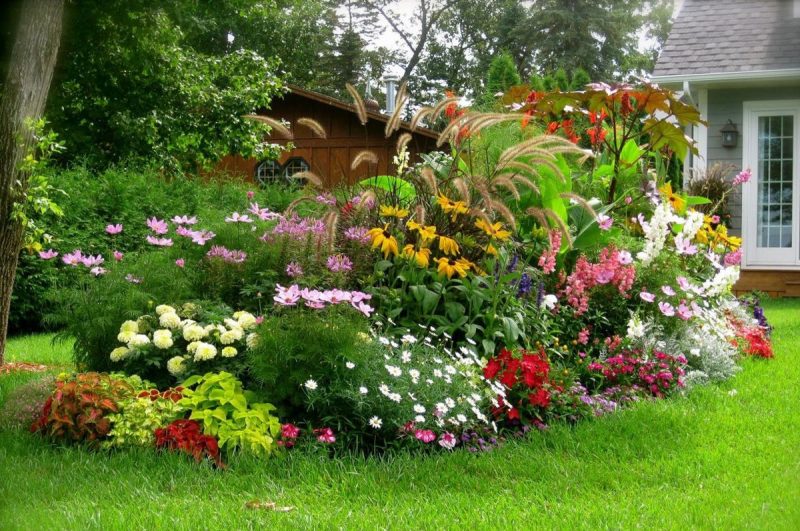
Aconite and digitalis in the background are comfortably located in it. A dicenter is planted on the sides. The average plan is composed of aquilegia, astilbe and astrantia. As a border plant, a horned violet is suitable.
Option 2. This is a flower garden located in the bright sun.
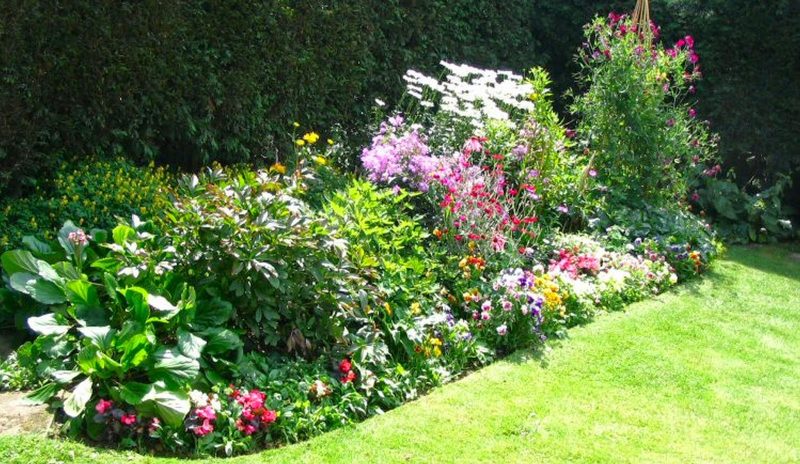
Background - stock roses with burgundy or pink flowers, or 2 park or climbing roses with pink colored flowers that can be replaced with clematis. All tall plants are planted on the north side so that the rest are well lit by the sun. The yarrow is the cherry queen, white peach-leaved bell, centrantus Raspberry jingle, large-flowered white delphinium as the second tier. As a border, a pink clove-grass or burgundy arabis ciliated is suitable.
Option 3. Flowerbed of round roses.

In the center - 3 ground cover roses of pink color: Ballerina, Bonica, Florett. Along the edge - miniature roses Degenhart, Flirt, Bidermeer, plant, alternating them. The result is a huge pink and white flowering and fragrant cloud.
The most unpretentious plants for giving

Any, even the most unpretentious flowers still need care. They sometimes need to be watered, fed and weed. Minimum labor costs require gypsophila, yarrow, mallow. It is easy to grow most ground cover plants, Veronica, cuff. Hydrangea and spirea need little care.












